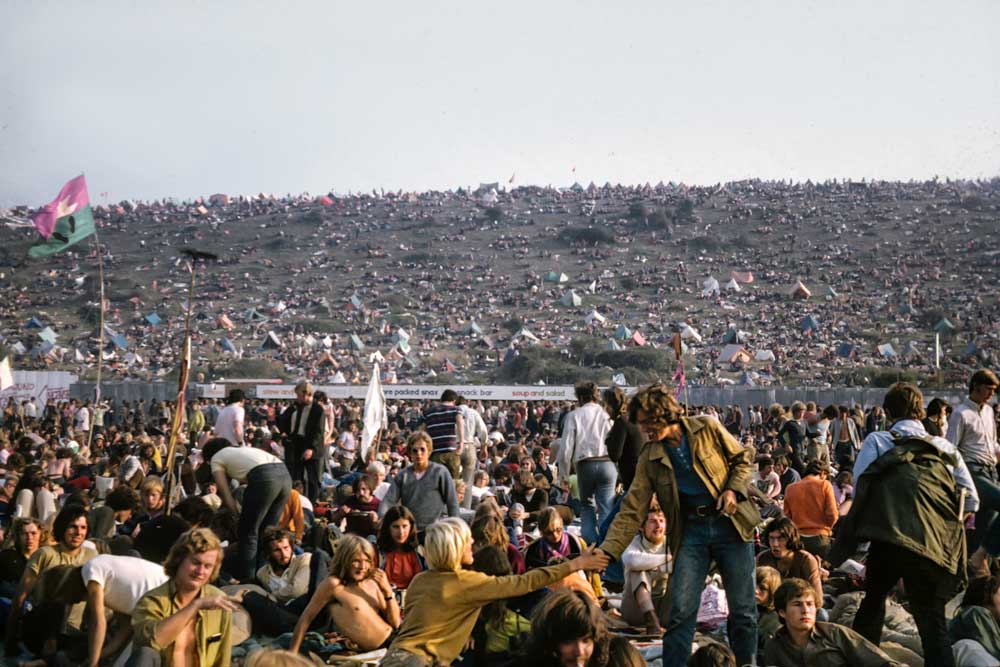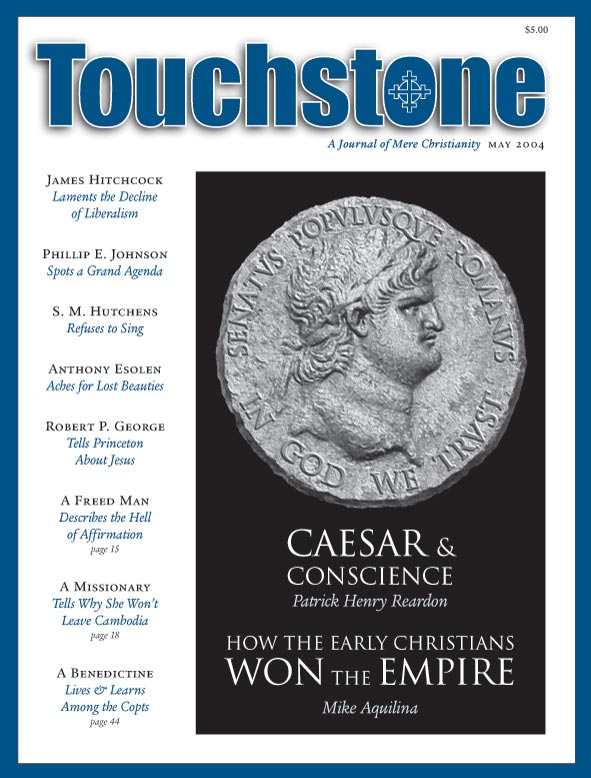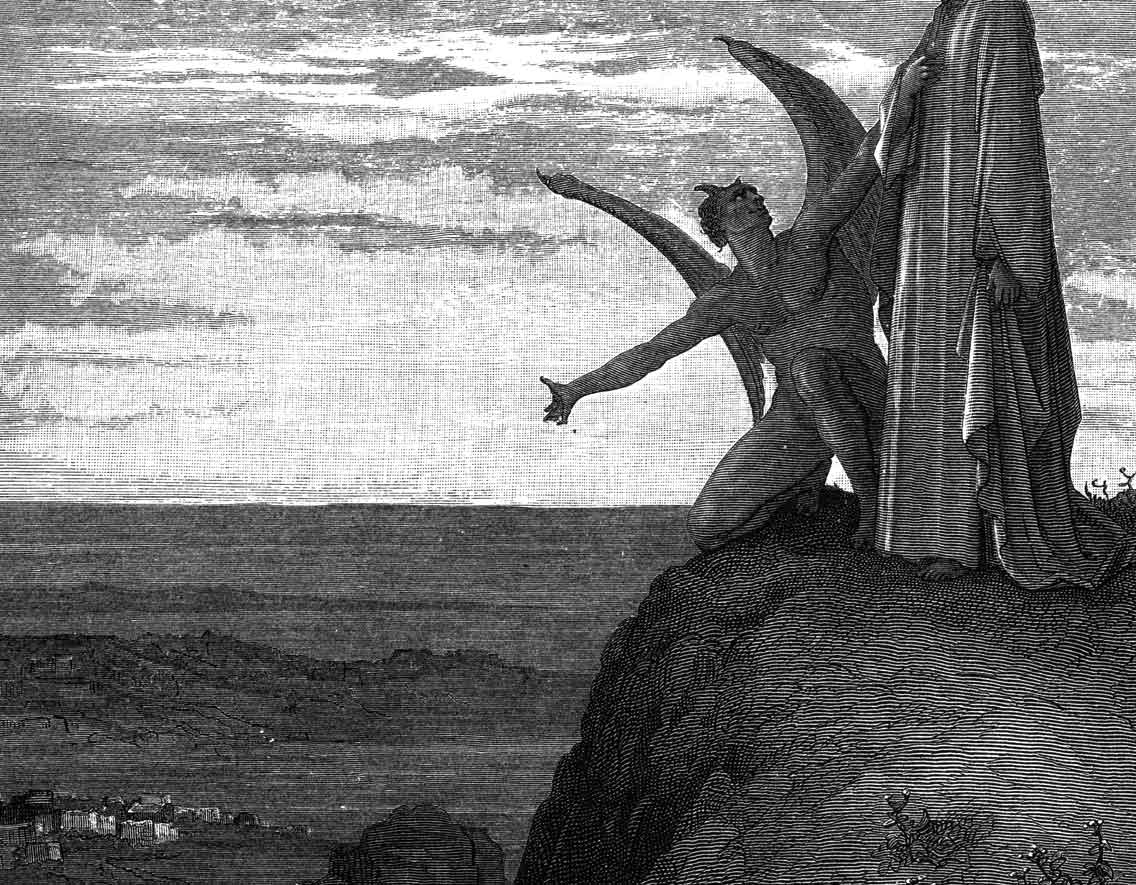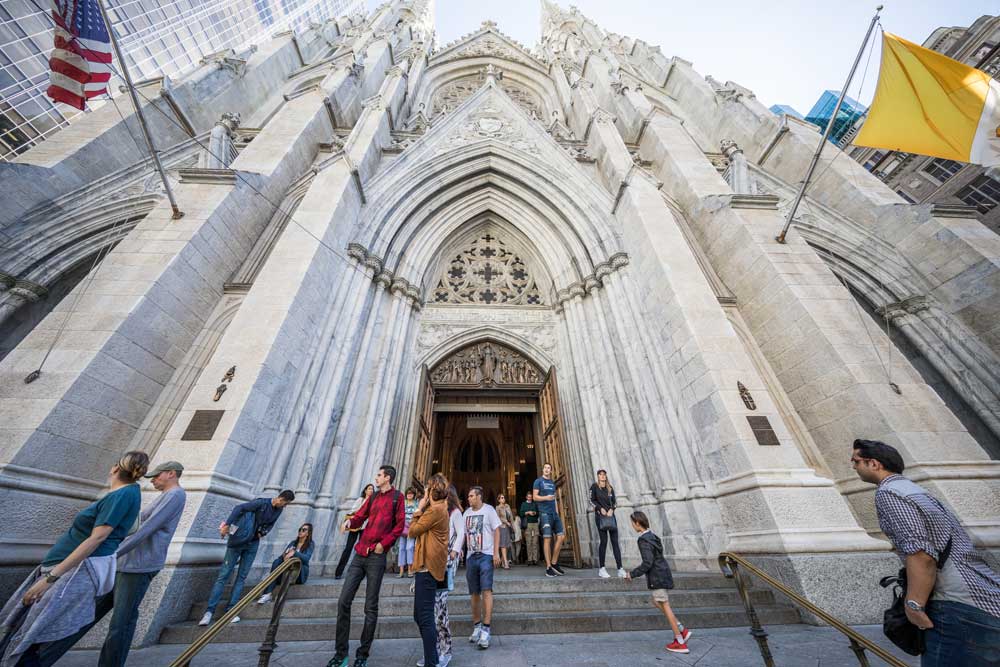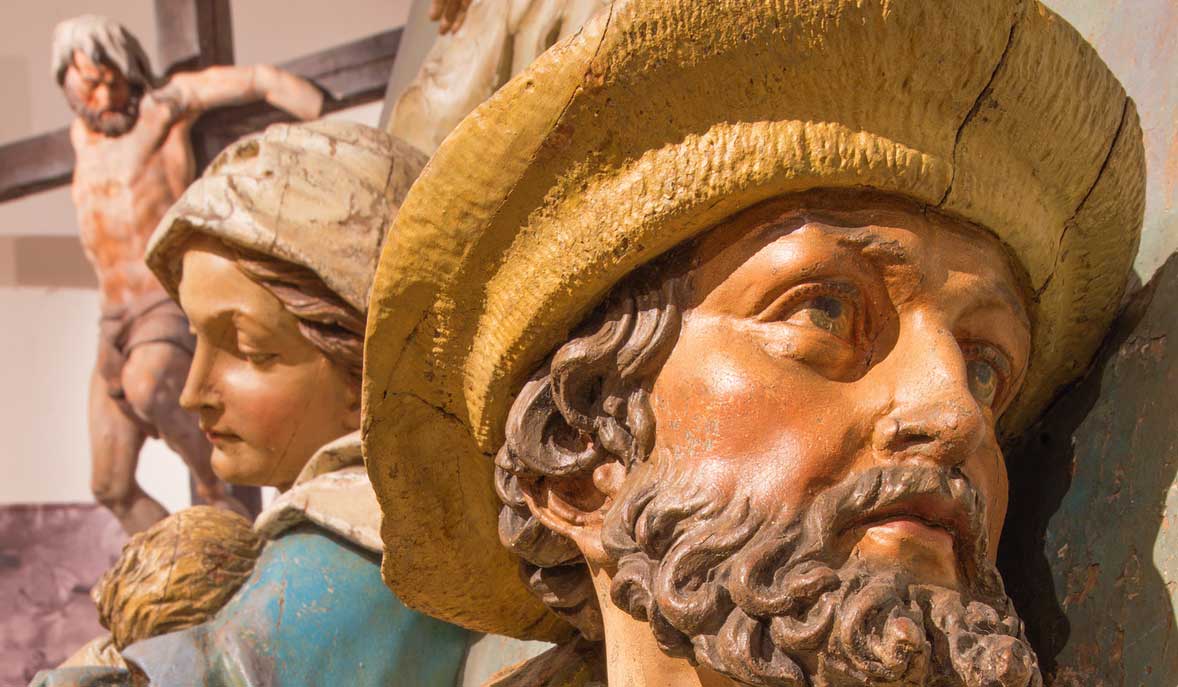Feature
Supremely Modern Liberals
The Unhappy & Abusive Marriage of Liberalism & Modernism
American politics is now as acrimonious as it has perhaps ever been. This may be puzzling to some as there are seemingly no longer any deep divisions within the polity. Most Americans, after all, are internationalists and free marketers of some kind, who disagree only within those parameters.
But there are deep and growing divisions. What is being played out now, acrimoniously, are the final implications of the agenda of the modernist movement, and of the liberalism it transformed in the 1960s, the final working out of ideas that were present from the beginning in the late 1700s but for a long time remained only half-recognized. This movement has made every political disagreement a dispute over fundamental beliefs, and indeed over the nature of reality: matters over which people will fight with particular ferocity.
Modernism in this sense is not the historical reality of modernization. It is an almost religious commitment to radical change, a fevered sense of the past as oppressive, a determination to move ruthlessly into the future no matter what the cost, an urge to shock traditional sensibilities. (Like all movements, I should note, modernism can be defined in a variety of ways, and not all self-conscious modernists espouse its entire agenda.)
It is inherently nihilistic, at its core nothing less than the systematic negation of every established belief and institution, the denial that any ultimate truth underlies culture, the often demonic conviction that destruction is the necessary preliminary to creation. It has touched deep and sinister springs in the human psyche: the love of negation and annihilation for their own sakes. Gratuitous, anarchical terrorism is in a sense modernism’s ultimate expression.
A Maniacal Urge
Modernism began with the French Revolution, whose maniacal urge to destroy the past even went to the point of abolishing the calendar and attempting to begin history entirely anew. Artists now became conscious of themselves as an “avant-garde” (previously a military term) and defined creativity as requiring a radical break with the art of the past. The new “bohemian” social type carried this ideal into society, defining free and authentic human existence as necessarily at odds with accepted beliefs and behavior. With Ludwig Feuerbach and Karl Marx, atheism for the first time became intellectually respectable, even as “theologians” like Bruno Bauer and David Strauss reinterpreted Christianity so as to require an outright denial of what Christians had believed for 1,800 years.
As Friedrich Nietzsche foresaw, the desire to destroy the past and begin history anew would require, as modernism’s final stage, the “transvaluation of values,” in which everything once thought to be virtuous—piety, family loyalty, personal uprightness, patriotism, self-reliance—would be turned into vices. Throughout history, human values have primarily been centered in family, religion, and country, and those institutions had to be destroyed if a “new humanity” were to be created.
Thus modernism extols every kind of sexual “liberation,” which nullifies the family; a skeptical, “value free,” and “scientific” spirit, which nullifies religion; and universalism, which nullifies loyalty to one’s country. Thus, it portrays the family as the source of pathology and abuse, and condemns both religion and patriotism as either hypocritical or dangerously fanatical. The ideal modernist is a militant religious skeptic who renounces both family ties and loyalty to country and submits instead to an abstract ideal of modernism’s new world.
Modernism sometimes proceeds by frontal attacks on traditional beliefs and institutions, but it can also achieve its goals by appearing to respect them while radically redefining them. Thus, “marriage” can be dissolved at will and can be undertaken by homosexuals; “God” becomes an emanation from the self, and “Scripture” is understood as recording man’s religious aspirations; and “true patriots” condemn their own country as a force for evil in the world. Traditional beliefs and institutions do not have to be annihilated; it is sufficient to drain them of their ancient meanings and fill them with others—particularly if they are reduced to the realm of the subjective and therefore private, of “values” that cannot be “imposed” on others.
At various stages of its development, modernism appeared to create new systems of meaning to supersede the old, but its internal dynamic required that in time the new consensus also be rejected, as merely a new kind of tyranny. Insofar as modernists profess stable values, those values originate outside modernism itself, which of its very nature cannot affirm anything permanent.
For a long time, devotees of Marxism or Freudianism (or both) claimed that they provided new certitudes to replace those modernism had rejected, but both ideologies are now the principal exhibits in modernism’s bankruptcy proceedings. Both were of their very natures destructive of fundamental values, Marxism by its cynical materialism, its reduction of even the most sublime realities to the level of economic interests, and Freudianism by its undermining of the classical Western definition of man as a rational animal and its claim that human action is governed primarily by the unrecognized irrational dynamics of the psyche.
Freudianism ultimately failed both as an understanding of life and as a therapy, even though for many decades it was treated as an unquestionable truth, its critics accused of resisting it precisely because it was true. Simultaneously, Marxism not only failed to achieve its promised utopia, but proved to provide the grossest of tyrannies.
Liberalism Transformed
Liberalism—the experiment of continually increasing the limits of personal freedom—developed almost simultaneously with modernism, but for a long time it balanced openness to change with respect for tradition, and promised an ordered liberty based on transcendent morality. For most of the two centuries since their birth, modernism was hostile to liberalism, insofar as the latter held to an objective moral order and could be dismissed as merely the rationalization of bourgeois privilege. Modernists claimed liberal freedoms for themselves even as they rejected the underlying principles behind those freedoms.
Nevertheless, liberalism contained within itself tendencies that could transform it into an ally or even a form of modernism. For one thing, the spirit of self-criticism is an essential component of liberalism, and at some point that ingrained habit went beyond casting an honest eye on one’s own beliefs and institutions and became a reflexive negativity towards them—as with spouses who find their marriages oppressive by nature, church members who deny the basic doctrines of their faith, and citizens who assume that their country is wrong in every situation.
For another, from the beginning liberalism also harbored certain nihilistic potentialities. The dogma of progress implied that repudiating the past would bring only good to humanity, and (once belief in transcendent morality was lost) liberalism could only affirm the value of freedom without being able to offer substantial guidance as to what it was for and how it was to be used. Liberals insisted that freedom be exercised responsibly, but their sense of what was responsible had to be brought in from sources outside liberalism itself, usually from the moral inheritance from the past, about which they felt deep and steadily increasing ambivalence.
At various stages of its development, liberalism has drawn lines beyond which the exercise of freedom was said to be irresponsible. But inevitably those lines have proven to be unstable, because of an ingrained suspicion of whatever comes down from the past, whatever is “imposed” on the free individual by society. As recently as 1960 it would have seemed preposterous (and gravely unfair) to accuse liberals of failing to honor the duties that men owe to God, family, and nation. By the end of that decade, those obligations had been defined as the obsessions of a benighted conservatism that was the enemy of freedom.
Like modernism, liberalism increasingly defines its task as that of expanding the scope of freedom without limit. Despite whatever misgivings they may have, liberals find it intellectually and emotionally difficult to oppose anything that presents itself as progress.
Liberalism had in its beginning held to the free market, and that idea also conceals a certain nihilism, since the market treats all commodities equally, distinctions among them deriving solely from the law of supply and demand. Any moral restraint imposed on the market—in particular, on what one can make and what one must pay workers—must be imported from the outside.
But since the 1930s, liberalism has nourished an animus against the free market, allegedly on the grounds that it rewards greed. This charge is almost always made against businessmen, seldom against wealthy athletes, entertainers, or authors, and the aspect of the free market that arouses the greatest liberal indignation is the claim that self-reliance and hard work bring deserved rewards. What many liberals detest in that claim is not the injustice it allegedly conceals but the fact that it affirms values that for 175 years modernists have despised as “bourgeois.”
Revolutionary Nihilism
Such were the two movements as they had developed since the late 1800s, at best uncomfortable allies. After their coming together in the period imprecisely called “the sixties,” the two have been so synthesized that the word liberal means in all essentials modernist.
The crucial coming together of modernism and liberalism occurred when a seemingly solid middle-class liberal culture proved to be vulnerable, primarily through its young, who combined a real or feigned liberal guilt over social injustice—particularly in the American South and in Vietnam—with a determination to test the limits of liberal tolerance for a variety of “alternative lifestyles.” The counterculture of the sixties was not new in the sense that it offered ideas never heard before. It had ample pedigree in various artistic and intellectual sources, and modernist ideas had long been propagated in the universities, at least as academic studies.
What was revolutionary was that the nihilism of socially marginal modernists finally spread to the great middle class, primarily through the actions of the privileged children of that class, who had grasped the implications of modernism and now demanded to enjoy the unrestrained “freedom” that it placed at the center of existence. Ironically, in view of its traditional contempt for the free market, modernism achieved this new mass base partly by becoming commercialized, with magazines like Rolling Stone sold on small-town newsstands and carrying expensive ads for rock groups whose music appeared on major commercial labels.
The youth culture effected a transvaluation of values in numerous ways, not least by forbidding learning from the past (“Don’t trust anyone over thirty”) and declaring rebellion against social norms to be true authenticity (“It is forbidden to forbid”). The counterculture was in essence a sometimes violent assertion of the “imperial self”: the claim that the free individual alone is the final arbiter of truth and righteousness, that self-expression is the highest good, that everything external to the self is tyranny. The counterculture talked compulsively of “community,” precisely because its ideologies undermined all existing communities, destroying even the possibility of such a thing.
The status of marginalization was now taken as a condemnatory judgment on society itself, the behavior of the marginalized (drug use and promiscuous sex most notably) turned into the new normality. This was most revealingly manifest with respect to pornography and crime. Traditionally, liberals had defended the civil rights of those whose views they despised, so that they opposed the suppression of pornography as a violation of due process and insisted that the rights even of criminals be respected, while they condemned the transgressions themselves.
But during the sixties, under the influence of modernism, they began to validate pornography as psychologically liberating and artistically significant, while defining criminals as victims of oppression and even as martyrs for liberty. Liberals who could not accept this, nonetheless could not easily oppose it, since the liberal idea of freedom had merged almost seamlessly with the modernist claim that every assertion of personal autonomy, every assault on established values, is truly liberating. (Those who, in the name of traditional liberalism, did oppose this movement found themselves denounced as “conservatives” and cast out from the major institutions of liberal culture.)
The modernist identity derives almost entirely from self-assertion, and it must search compulsively for restraints to throw off. Its continuous demand, which liberals were willing to meet, is, at a minimum, to “understand” behavior that is plainly evil, such as gratuitous killings and acts of terrorism, and as far as possible to lay it at the door of “society,” thereby reversing the roles of transgressors and responsible citizens.
Modernity’s Acids
Inevitably, modernism undermined the authority even of the institution that had sheltered it for so long: the university. Rigorous cultural and intellectual standards are among the chief victims of the modernist culture of nihilism, and here as elsewhere, liberals who struggled to maintain objective standards in the face of radical assaults were necessarily fighting a rear-guard action and condemned as reactionaries.
The intellectual vogue of “deconstructionism”—the claim that no text has a fixed and authoritative meaning, that all texts should be understood as willed efforts to exercise power—is usually considered “postmodern,” a term coined to acknowledge that the acids of modernism, once they had penetrated deeply enough, undermined modernism itself, discrediting all its certitudes, including those of liberalism. But “postmodernism” is a misleading term if it is taken to imply the repudiation of modernist ideas. It is simply modernism’s inevitable and logical next stage.
According to deconstructionism, a group’s beliefs are merely the values it has adopted to advance its own interests and to suppress every other group. The characteristic beliefs of Western civilization—which most liberals themselves held until the sixties—are merely those of “dead white (heterosexual) males” and an effective mechanism for oppressing women and racial and sexual minorities. What had been considered the Great Works, the works by which the civilized mind and character should be formed, must now be read so as to reveal this.
The related movement of multiculturalism tends to define society in terms of “oppressors” and “victims,” another manifestation of the nihilistic impulse, which reduces reality to group conflicts in which “truth” is on the side of those who most effectively claim victimhood for themselves and who put forward their demands in such a way as to silence even the possibility of discussion. For example, terrorism is “explained” on the grounds that terrorists feel oppressed, without regard for the legitimacy of those feelings.
Until only a few decades ago most liberals would have been resistant to deconstructionism and multiculturalism, to the extent that both denied the truth of Western liberal values, including individual freedom and tolerance for diversity. But belief in the moral superiority of the non-Western world has become almost a staple of the Western educational system at all levels, and exalting other cultures at the expense of one’s own is taken as a sign of enlightenment, a test of political and personal authenticity.
It is a fundamentally incoherent position, since the imperative of systematic self-criticism itself seems to be a product of Western civilization. It is also a fundamentally illiberal position, since it requires, in the name of liberalism, the support of societies that deny the liberal values of freedom and tolerance. Liberals compulsively turn the weapons of self-criticism against their own culture, even as they extol other cultures that deny that imperative, and those liberals who defend their own culture often do so with troubled consciences, with many qualifying caveats.
Anti-Humanists
To the extent that modernism could be said to have escaped the trap of nihilism throughout its earlier history, it escaped by affirming a vague kind of humanism, particularly by claiming that the destruction of old beliefs and institutions and the expansion of freedom were pursued for the sake of human dignity and “human flourishing.” (Liberalism had escaped by holding to an objective moral order, which it held with decreasing commitment until, in coming together with modernism, it abandoned that belief entirely.)
But humanism, in its exaltation of the human species and its pride in civilization, was always problematical for modernism, and now the movement’s cutting edge is precisely a repudiation of humanism. With modernism having undermined traditional beliefs, including the belief in truths securely inherited from the past, post-modernism now acknowledges that there is also no philosophical basis for modernism itself, no compelling way in which human dignity can be affirmed. Deconstruction possesses the power to deconstruct anything, precluding even the possibility of an authoritative text, including those texts (the Declaration of Independence) by whose authority liberalism traditionally justified itself.
The “animal rights” movement is the overt denial of humanism, thereby reducing liberalism to nothing beyond an unlimited acceptance of change, the anti-humanistic theories of Peter Singer currently serving as the principal test of liberal “open-mindedness.” (Singer has suggested that unborn children have less of a right to life than some of the higher primates.) On the other side, having dealt humanism a fatal blow, liberalism is also unable to mount a strong defense against a technological utopianism in which the role of man in the universe is steadily surrendered to machines.
According to current modernist-liberal dogma, man’s proclaimed superiority over other animals is the ultimate arrogance, while on the other hand there is nothing distinctively human that cannot be ceded to technology. The fact that some liberals condemn technology as the rape of nature and at the same time favor human cloning and other advanced technologies is another manifestation of the blind openness to change that modernism enforces. Familiar kinds of technology are condemned; radical new kinds are endorsed.
Issues of sexual behavior are now foremost in the liberal program because, no longer able to affirm an exalted view of human dignity, liberals are reduced to defining freedom in terms of personal desires.
Liberalism Modernized
With the coming together of modernism and liberalism, the meaning of the latter has undergone a significant change. Properly understood, the New Left of the 1960s was not a political movement at all but a cultural one, asserting claims to “freedom” that no ordered society could accommodate. Thus, as liberalism assimilated the modernist outlook, primarily through the agency of the New Left, it also ceased to be primarily political.
Although battles are still fought over familiar issues—war and peace, economic policies—those battles are increasingly cultural in nature, calling into play passions that often seem disproportionate to the issues themselves and demanding symbolic victories that extend well beyond any measurable political effects. (For example, critics of earlier American wars would never have thought that the “right” to burn the flag was a properly liberal issue.) There are no liberals who resist the liberal-modernist synthesis for the simple reason that those who do are excommunicated from the movement and redefined as conservatives. For that reason, I will hereafter refer to that synthesis as “liberalism” by itself.
This liberalism explains much of the animosity in contemporary politics, because it transforms every political disagreement into a dispute over fundamental beliefs and attempts to put the coercive power and economic force of the state behind its policies. The sexual behavior of President Clinton became the bitterest of political battles because both sides understood that the battle was, in effect, a national referendum over the very possibility of sexual morality. Some people detested Clinton as the embodiment of irresponsible hedonism, while others detested Kenneth Starr as the embodiment of an outmoded and oppressive notion of moral objectivity. President Bush is hated by liberals not primarily because he promotes specific policies but because of who he is: a symbol of virtues that modernism long ago rejected.
For much of the twentieth century, conventional enlightened opinion predicted that traditional beliefs, especially (in the West) orthodox Christianity, would dissipate under the irresistible pressures of modernity. Instead, those pressures have inspired a strong revival of religion in the United States, a resurgence frightening and incomprehensible to liberals, who (therefore?) denounce religious movements with particular ferocity. It might even be said that now the primary agenda of liberalism is to deny moral traditionalism every kind of public respectability.
Allegedly, this alarm stems from the fear that religious believers aim to establish some kind of theocracy, but strong religion is mainly detested because it constitutes the ultimate public affirmation of objective meaning, a continuous counterfoil to modernist nihilism. Liberals take particular alarm at the religious claim that there are sources of value beyond the liberal society itself, and some liberals now insist that full rights of citizenship can be granted only to those who accept modernist agnosticism. The worst condemnation liberals can hurl at religious believers is, “They claim to possess the truth!”
Thus, some liberals identify the “religious right” as the greatest single danger facing the country, not merely because of its specific political program (particularly its opposition to abortion and the sexual revolution) but because religion ought not even to have a program. Some would exclude religious believers from any meaningful participation in public life. (For a survey of this liberal hostility, see my “The Enemies of Religious Liberty,” in the February 2004 issue of First Things.)
Debatable Issues
In principle, the “social issues” should not be matters of political debate at all, since the political expression of those issues ought to manifest the values of the citizenry, values that originate from independent, indeed superior, sources. The reason liberals can make matters of fundamental meaning matters of public debate is that the welfare state, in its claim of responsibility for people’s lives in the fullest sense, inevitably turns questions of value into political issues.
If, for example, through the public schools and other agencies, the state undertakes to foster people’s “welfare” in ways that go beyond mere economic need, should it not also change “repressive” attitudes towards sexual behavior, relations between men and women, or respect for authority? If healthy family life is shown to be the best protection against poverty, should the state encourage stable marriages between any two people willing to enter into that state?
In an only half-conscious way, political battles are now often conflicts over fundamental meaning or, more precisely, conflicts between those who believe that there are such meanings and those who deny them. Thus, the advance guard of liberalism does not seek concrete political achievements so much as symbolic victories, the use of the public forum to undermine existing certitudes. Debates over particular issues—abortion, homosexuality, pornography—are only secondarily about the specific practices themselves. Instead, they represent the liberal demand that all such questions be kept perpetually open, that no one be permitted to affirm objective moral standards, that each self-defined “oppressed” group be permitted to throw off its shackles in the terms it chooses. Remember, for example, General Wesley Clark’s remarkable claim, during his failed bid for the presidency, that the child becomes a human being only “when the mother chooses.”
Similarly, the push for homosexual “marriage” is really a demand for the deconstruction of marriage, a denial of its real existence, its demotion to the status of an arbitrary legal category. Despite all the publicity about American homosexuals now attempting to “marry,” experience in the Scandinavian countries shows that relatively few homosexuals took advantage of this opportunity when it was offered to them. Many homosexuals regard the institution of marriage as itself the root of all repression and claim to offer society a better model of sexual relationships.
At first unnoticed by the general public, various American elites—educators, clergy, journalists, attorneys, government officials, even some businessmen, the very people whom modernists had always despised as philistines—over time became deeply infected with liberalism. The same process of liberalism being transformed by modernism that occurred in the universities also occurred in the mainline Protestant and the Catholic churches, in social agencies, and in the major media. As a result, never before in history has there been a society in which the institutions that embody its values—schools, social agencies, many of the churches—now work to undermine those values.
In contemporary America most elites appear to be at least complacent towards nihilistic currents—few are heard to object to the misogynist and racist lyrics of rappers, for example, presumably because the rappers are considered “marginalized” and are protesting “society”—and it is primarily the masses who retain some tenuous commitment to traditional beliefs. The famous division between “red” and “blue” on the electoral map of 2000 roughly corresponds to the division within the country between those who believe in traditional values and those who do not. According to liberal dogma, the tradition-minded masses are by definition incapable of embracing necessary changes and must be prodded or coerced into doing so.
Soft Totalitarians
This popular resistance has led modernism to adopt a kind of “soft totalitarianism” implicit in its philosophy. This is seen in the philosophy of existentialism following World War II, which held that existence was “absurd,” and in doing so announced that the final negation had at last been reached, that the modern quest had exhausted itself.
Logically, it should have led to political quiescence. But its most famous spokesman, Jean-Paul Sartre, was a dogmatic Marxist who placed his ideology beyond the reach of rational criticism by making an uncritical commitment to the “progressive” forces of history. He offered a confirmation of the fact that nihilism ends in totalitarian politics, because the denial of intellectual objectivity unleashes (and justifies) Nietzsche’s “will to power,” which leaves people free to assert their wills in whatever ways they are able.
Both communism and fascism were modernist movements that mounted lawless radical assaults on traditional beliefs and institutions and proclaimed that civilization was at bottom merely the fruit of the imposition of power. Some modernists were attracted to fascism, but many more chose communism. (And many, George Bernard Shaw for example, chose both, till the Nazis discredited fascism.) Although a concern for the oppressed was the alleged reason for this, communism’s fanatical hatred of bourgeois values made it attractive, along with its claim to command the future.
Communism had little appeal for the working classes, who were its supposed beneficiaries. Its most passionate devotees were educated people, often from privileged backgrounds, who showed little real sympathy for the poor. As George Orwell, Lionel Trilling, and others recognized at the time, sympathy for communism was finally a mere intellectual fashion. Some Western liberals made a special effort to overcome their squeamishness about communism because it was for them the very embodiment of the modernist imperative.
Liberalism now moves towards a soft totalitarianism, a view of political authority in which citizens are conceded less and less ability to govern their own lives. The omnicompetent welfare state is already in place as the vehicle for this totalitarianism, and the imperial judiciary now decides questions of meaning, an inevitable development once religion was defined as an “intrusion” into the public sphere. Moral questions (such as whether homosexuals should be allowed to marry) sometimes require political decisions, and the courts are the only available agencies to resolve them. It is only one of the many ironies of the situation that judges thus must function as repositories of transcendent wisdom, even as liberalism denies that such wisdom is even possible.
Despite this skepticism, liberalism now moves relentlessly to impose its dogmas on a reluctant citizenry. Education is used as an instrument for changing young people’s fundamental beliefs, even to the point of weaning children away from the beliefs of their “reactionary” parents. In other liberal Western countries (Canada among them) freedom of expression has been significantly curtailed to forbid any public criticism of favored groups, especially homosexuals, and in the United States liberals have tried, with varying degrees of success, to enforce “speech codes” on college campuses.
Zeno’s Paradox
Abortion still stands as the premier liberal issue, since it involves the ultimate assertion of the untrammeled will of the individual. But the rhetoric of “choice” is only invoked in support of women who choose to abort. Liberals have been reluctant to condemn the policy of forced abortions in China, since they regard a woman’s decision to bear a child as often irresponsible, demonstrating that the mother is insufficiently enlightened to make a correct choice.
Beyond abortion, environmentalism will, for the indefinite future, be the crucial issue. In the name of the good of the earth, some liberals have already announced their willingness to use coercive measures, even to the point of restricting people’s right to bring children into the world.
This soft totalitarianism is nihilistic in that it systematically nullifies traditional beliefs and customs and replaces them with rules that are purely external, without any deep roots in the culture. They are imposed from without in the name of progress, an imposition of precisely the kind of soulless conformity that liberals claim to be characteristic of traditional societies. A thoroughly “modern” society leaves people with a sense of emptiness, because they cannot relate its imposed forms to family, religion, and other perennial organic realities.
“Speech codes” and other measures restrictive of civil liberties are now part of the liberal agenda because liberalism defines traditional beliefs, and those who hold them, as inherent threats to freedom. In Canada and parts of Western Europe, civil liberties have moved from being the very essence of liberalism to being severely curtailed under the rubric of preventing “hate crimes” by preventing “hate speech,” and the attempts to impose this censorship in American universities serve notice that liberals intend the same for the whole society.
Beginning with the French Revolution, modernism has also required authoritarian government as the only antidote to the anarchy it spawns. As traditional laws and customs are discarded, whatever order exists must be imposed. The nihilism now spreading through bourgeois culture can still be concealed in various ways, prosperity often serving as a kind of anesthetic against nihilism’s depredations. But the culture of poverty in its most extreme manifestations displays the results of liberal negation in their starkest forms: naked lust, greed, hatred, and violence, a war of all against all without even a pretext of redeeming features, a condition in which poor people trying to live ordered lives are the principal victims.
Liberal orthodoxy requires that such pathologies be explained as the effects of an unjust society, caused solely by material deprivation. Few liberals can acknowledge the depth of those pathologies or the extent to which they have been exacerbated by decades of liberal ideology and policies. In reducing the problem entirely to one of poverty, liberals effectively deny the moral nature of poor people, who are treated merely as economic beings. Liberal opposition to “faith-based initiatives” is a denial of the claim that religion can or should play a central role in overcoming social pathologies.
Modernism is an exemplar of Zeno’s Paradox, whereby it is impossible to arrive at a goal because it is necessary repeatedly to traverse half the remaining distance to the goal. The angry hysteria now characteristic of so much liberal politics is perhaps partly triggered by a panicky awareness that the point of ultimate denial is fast being approached. How many more “breakthroughs” can society celebrate, how many more obstacles to freedom can be assaulted and toppled, before there is nothing left?
But if liberals sometimes have an inkling that the process of “liberation” has gone too far, they have no way of turning back. Thus, as the goal of absolutely untrammeled freedom is approached, liberals proclaim all the more loudly that society is oppressive and demand a redoubled push towards liberation.
Weakened Egos
Ironically, the very assault on established values that modernism mounted in the name of personal freedom, its reduction of social reality essentially to an emanation from the self, actually weakens the ego, which is thereby made to experience its own fragility, the fact that it is bereft of substantial support and is thrown back on its own resources. Much of liberal politics is therefore a demand for public affirmations of worth—for women, racial minorities, homosexuals—made necessary in part by the liberal negation of the traditional communities that once clothed the naked self.
The concept of “affirmative action” follows from this and is itself nihilistic, because the categories into which it places people are empty ones—sex, race, ethnicity—which have no necessary connection to the moral identity of the individuals placed in them. “Conservative” women and blacks represent a threat because they affirm meanings that are more than mere expressions of group identity.
The politics of meaning is not conveniently reduced to partisan divisions. Some Republicans are modernist liberals, or at least can see nothing radically wrong with the modernist-liberal agenda. Many others are uncomfortable with issues they think do not belong in politics at all, and still others seem largely oblivious to those issues. But after 1968, the Democratic party made itself increasingly hospitable to the ideologies of modernistic liberalism. Symbolically, abortion, far more than any strictly political or economic question, is the one issue on which, at the highest levels of the party, there can be no compromise.
It is not coincidental that, while self-proclaimed religious skeptics are a small minority of the citizenry, they are overwhelmingly Democratic in their politics. While the party still includes many sincere believers, nonbelievers correctly sense that they have there a comfortable home. It is primarily Democrats, beginning with John F. Kennedy, who have banished religious principles from public life, on the grounds that those principles are purely “private,” hence, purely subjective.
It is also not coincidental that a large majority of those who profess some kind of “New Age” religiosity (reincarnation, goddess worship) also announce themselves as Democrats, since New Age religiosity is a purely self-created form of belief, validated solely by the subjective demands of the self.
James Hitchcock is Professor emeritus of History at St. Louis University in St. Louis. He and his late wife Helen have four daughters. His most recent book is the two-volume work, The Supreme Court and Religion in American Life (Princeton University Press, 2004). He is a senior editor of Touchstone.
subscription options
Order
Print/Online Subscription

Get six issues (one year) of Touchstone PLUS full online access including pdf downloads for only $39.95. That's only $3.34 per month!
Order
Online Only
Subscription

Get a one-year full-access subscription to the Touchstone online archives for only $19.95. That's only $1.66 per month!
bulk subscriptions
Order Touchstone subscriptions in bulk and save $10 per sub! Each subscription includes 6 issues of Touchstone plus full online access to touchstonemag.com—including archives, videos, and pdf downloads of recent issues for only $29.95 each! Great for churches or study groups.
Transactions will be processed on a secure server.
more on liberalism from the online archives
more from the online archives
calling all readers
Please Donate
"There are magazines worth reading but few worth saving . . . Touchstone is just such a magazine."
—Alice von Hildebrand
"Here we do not concede one square millimeter of territory to falsehood, folly, contemporary sentimentality, or fashion. We speak the truth, and let God be our judge. . . . Touchstone is the one committedly Christian conservative journal."
—Anthony Esolen, Touchstone senior editor





